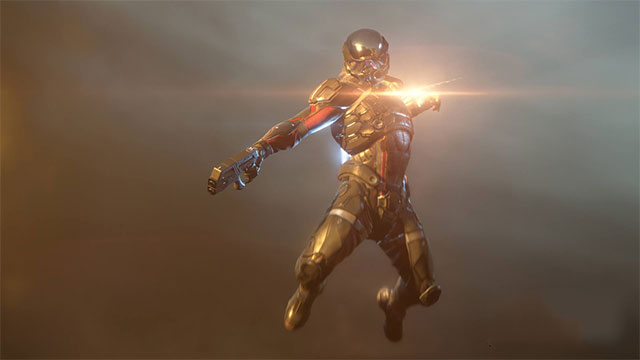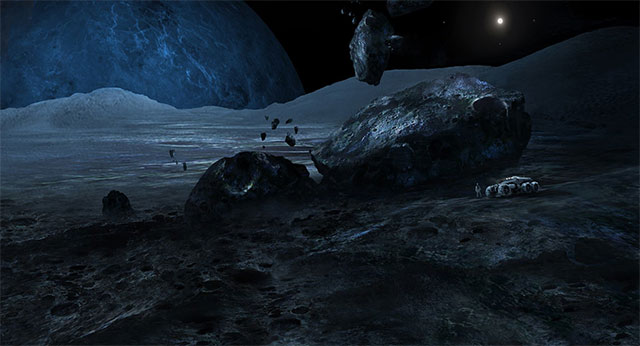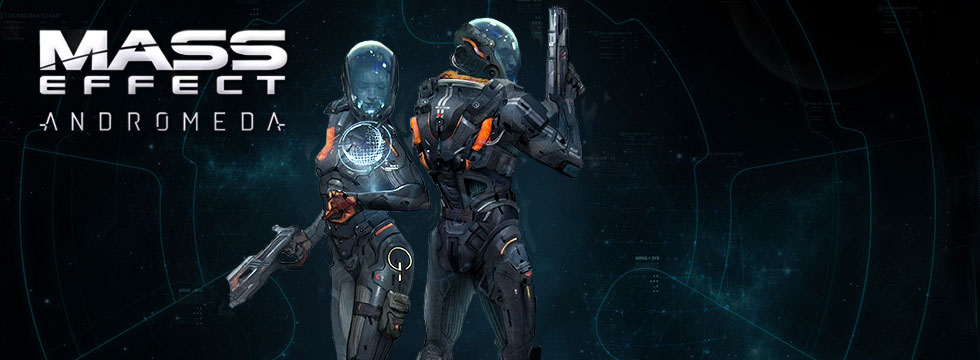author: Meehow
Builders of the Ark. The Ark Theory: Does Mass Effect: Andromeda feature a galactic exodus?
Table of Contents
The timeline I mentioned above assumes that the Ark was discovered by a human expedition following the clues the Protheans left on Mars. This allegedly happened in 2149, the same year the frozen Charon relay (assumed to be one of the Pluto’s moons) was discovered. However, since the humanity didn’t have the know-how or the technology necessary to properly research and activate the Ark at the time, the discovery has been kept under wraps. The research carried out under such circumstances yielded no significant scientific results and was suspended few years later for almost three decades.
The first breakthrough happened in 2183 when admiral Hackett, together with a group of high ranking Alliance officers, took Commander Shepard’s warnings against the Reaper threat seriously. Subsequently, some of the best Asari, Salarian and Turian scientist were allowed to participate in the research of the Ark while keeping it secret at the same time. Two years later, in 2185, Liara T’Soni became the Shadow Broker and started pouring her vast, newly acquired resources into investigation that, she hoped, would uncover a way to stop the Reaper invasion. Her search has brought her to Kahje – the homeworld of the Hanar and the Drell – where she discovered a set of encryption keys granting access to archives hidden on Mars (The story is depicted in the fourth issue of Mass Effect: Homeworlds comic and we visit the Mars archives during Mass Effect 3) and several other planets. Soon after, she shared her findings with Admiral Hackett.

Thanks to the data she acquired, the scientist researching the Ark discovered its identity as a gigantic mass relay leading to the Andromeda galaxy that could possibly provide an escape route. The Citadel Council accepted Alliance’s request for assistance and helped arrange a contingency plan to evacuate the Milky Way in case the Crucible proved to be ineffective. That’s when the ARKCON or, perhaps, Ark Contingency was born. The Ark was activated and soon the first group of explorers ventured into the unknown. It is unclear if, and with what results, the Protheans and/or other civilization preceding them made use of the Ark in previous cycles, but it is almost certain that they at least thoroughly researched it.
When Shepard’s mission on Thessia ended up in failure and the data from the Prothean beacon hidden there were seized by Cerberus, the Ark Contingency began frantic preparations as the journey to Andromeda galaxy became a possibility that needed to be seriously taken into account. This would be the true meaning of the Asari Councilor’s words, when she mentioned that “Plans must be put in motion.” and “Continuity of civilization has to be considered”, during the conversation with Commander Shepard. The preparations were in full swing: resources, raw materials and ships had to be amassed as well as a sufficient number of soldiers and civilians to ensure the survival and expansion of the new settlements. The war with the Reapers wasn’t over yet but the ARKCON fleet awaited the orders to evacuate through the Ark, should the battle for Earth be lost.

When, during the final of Mass Effect 3, the team assaulting the Conduit in London was annihilated by the Harbinger, the Alliance Command acknowledged the situation to be hopeless and issued an immediate evacuation order to the ARKCON fleet. As we know, Shepard miraculously survived and managed to activate the Crucible altering the face of the Milky Way as we know it. As a result, the entire mass relay network was either destroyed or rendered useless. The members of the ARKCON expedition, however, have no idea what transpired after they left and – assuming it wasn’t a one-way relay like the original Conduit - have been depraved of a way to return as the Ark was destroyed or disabled. Even if the cycle continued – a scenario NeroJoe hasn’t considered on his timeline – and the Ark remained hidden from the Reapers, it would be unusable as the intelligent civilizations that launched the ARKCON fleet would have been harvested. Either way, the Andromeda galaxy would be unreachable for many thousand years. This marks the beginning of Mass Effect: Andromeda.
The most important question left to be answered – other than the technical matters – is, obviously, the Ark’s origin. The most probable candidate would have been a long extinct species possessing a highly advanced civilization; not necessarily the Protheans, as NeroJoe suggests. We can’t discard the possibility that the Ark, like the Crucible, was created with the input of multiple civilizations spanning across many cycles. Or perhaps, it was built by the Citadel Council races after the last war with the Reapers although it seems like the least believable of the explanations.

To make the ancient origin of the Ark more plausible, I’d like to point at how the technical advancement level varied among different races and cycles in the span of known chronology. For example, it took the Reapers a few hundred years to wipe the Protheans in the last cycle. As we go further back in time we find traces of progressively more technologically advanced civilizations. The technology to disable a Reaper with a single shot existed 37 million years back, as proves the discovery of the unnatural Great Rift Valley on the planet Klendagon (Hawking Eta cluster, Century system). The civilization possessing the technical capabilities to create such a devastating weapon could have been able to build its own mass relays. Let’s return to the Crucible for a moment – its initial concept and designs must have originated from a very advanced civilization as well. What’s more important, it is more than possible that the Ark may not be a typical mass relay as we know them.
The mass relay network, including the Citadel, was created as an experiment on a galactic scale intended to accelerate and guide the evolution of organic civilizations and improve the efficiency of subsequent harvests. This leads us to a conclusion that the preceding harvests faced more difficulties since the Reapers were fewer in numbers and the civilizations could develop in unanticipated ways. The Ark may well predate the relay network but determining its accurate age may prove difficult if not outright impossible, just like in the case of mass relays. The earliest war with the Reapers we know of could have taken place as long as 1 billion years ago – that’s the supposed age of the Leviathan of Dis, a Reaper corpse found on the planet Jartar (Hades Gamma cluster). Another thing is the Ark’s supposed application; was it designed as a way to escape the clutches of the Reapers or was it intended for colonizing new galaxies?

Whatever was the original purpose of the Ark – and remember that the name was most likely given by the humans - during “our” cycle it was clearly intended as an escape route. An additional hint can be found in BioWare’s designs, full of symbols and references. For instance, the name of the Omega-4 relay was most likely inspired by the combined meanings of the final letter of the Greek alphabet – the omega, associated with death or an end – and the number 4, considered bad luck in several far-east countries and also associated with death (the reading of 4 sounds almost identical to the word “death” and is feared so much that it spawned something called tetrafobia). You can see how the name “Ark” may be a reference to the Noah’s Ark – meaning salvation from a disaster and hope for a new beginning.

